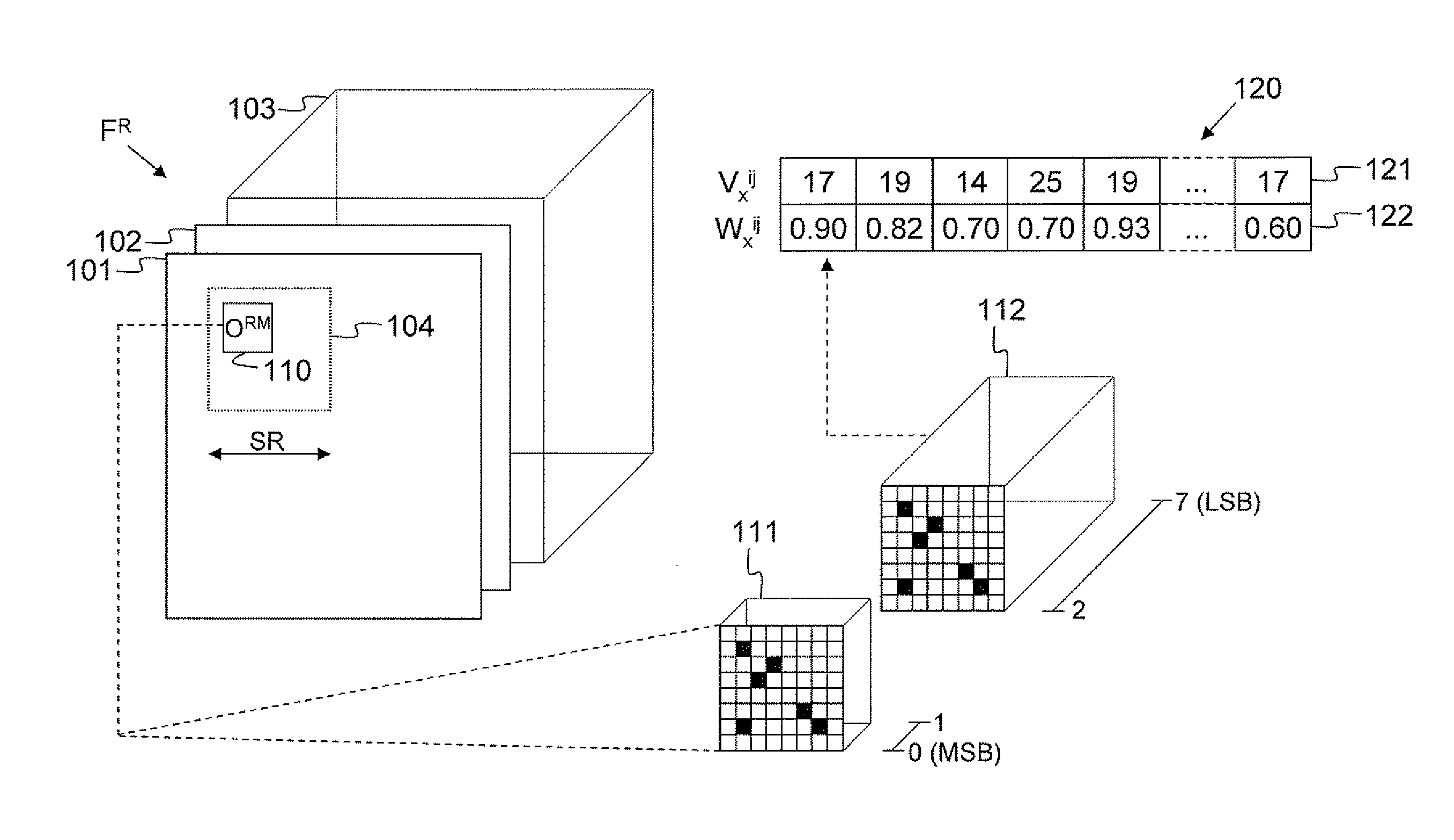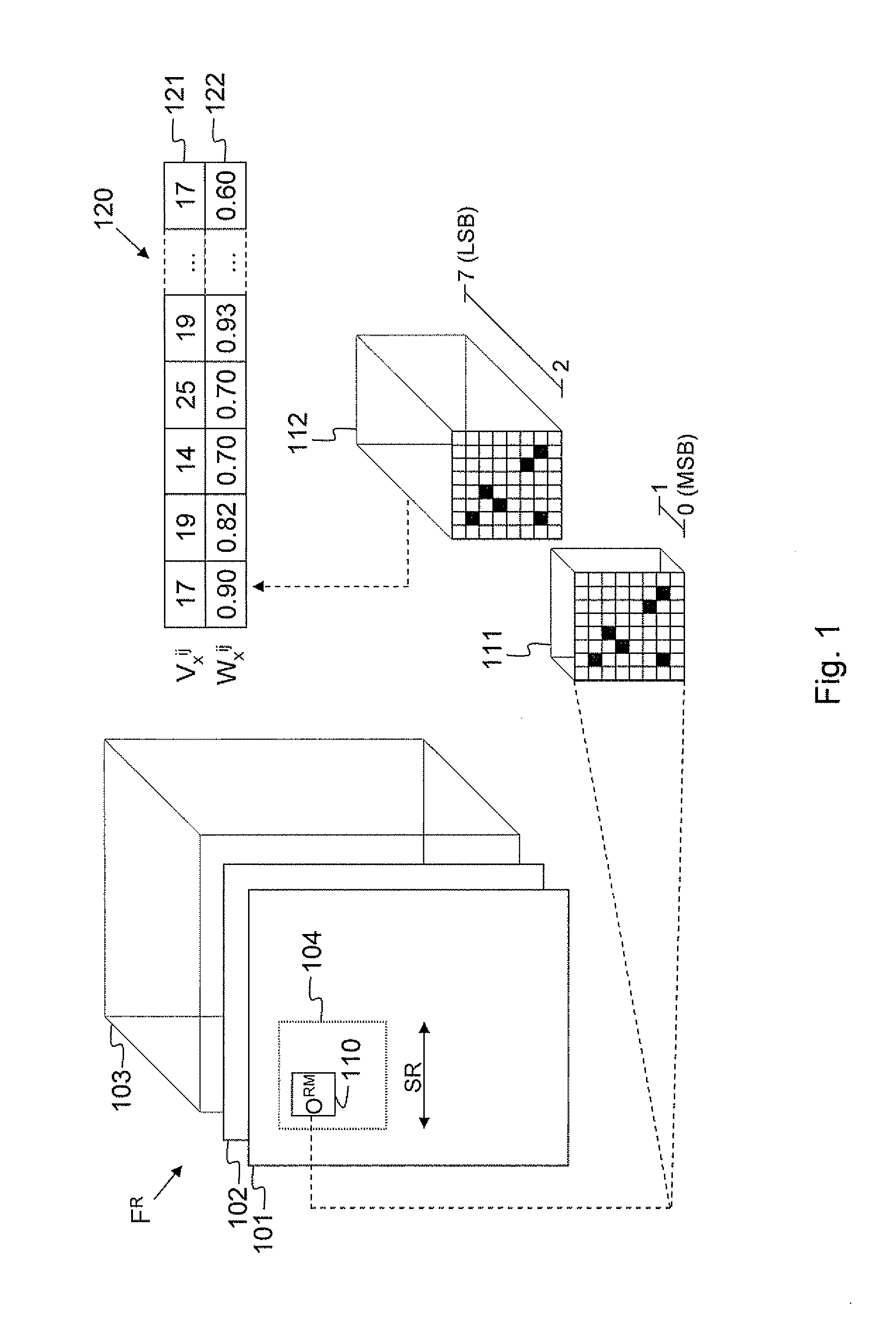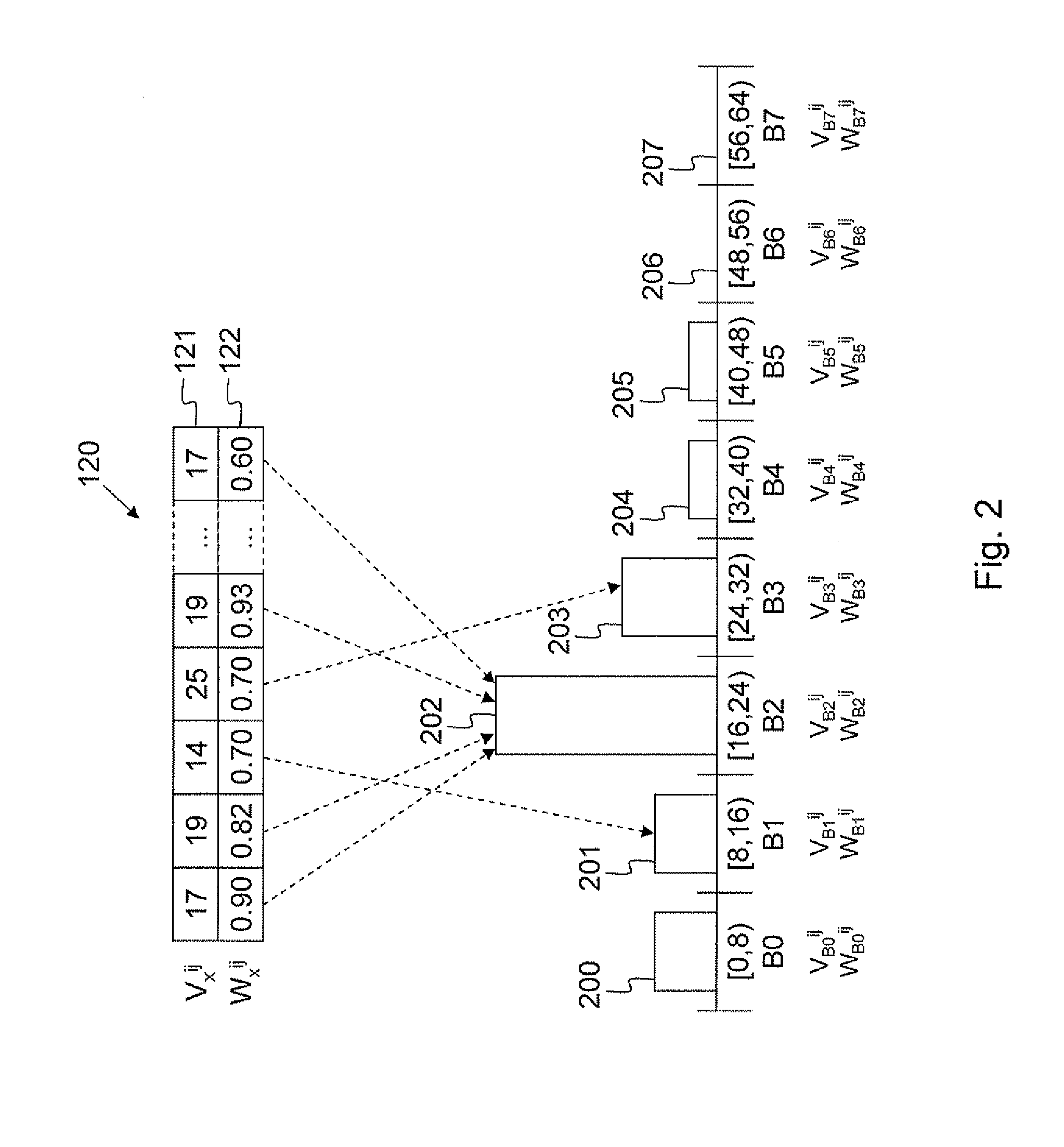Motion estimation and compensation process and device
a technology of motion estimation and compensation, applied in the field of video encoding and decoding, can solve problems such as iterative process and complex structur
- Summary
- Abstract
- Description
- Claims
- Application Information
AI Technical Summary
Benefits of technology
Problems solved by technology
Method used
Image
Examples
Embodiment Construction
)
[0104]FIG. 1 illustrates motion estimation in a Wyner-Zyv decoder that is decoding a current Wyner-Zyv video frame F, not drawn in the figure. Once the first k bit planes of the current Wyner-Zyv frame F have been decoded, the motion estimation and compensation process according to the present invention is applied for the luminance data. In FIG. 1, k is assumed to equal 2 whereas the total number of bit planes that represent the luminance data is assumed to be 8. Thus, as a result of the motion estimation and compensation process, the values for the residual 6 bit planes of the luminance data will be predicted without having to encode, transmit and decode these bit planes. The chrominance data are assumed to follow the weights and prediction locations from the luminance component, but on all bit planes instead of on a subset of residual bit planes. In other words, if it is assumed that the chrominance component of the pixels is also represented by 8 bit planes, the values of these ...
PUM
 Login to View More
Login to View More Abstract
Description
Claims
Application Information
 Login to View More
Login to View More - R&D
- Intellectual Property
- Life Sciences
- Materials
- Tech Scout
- Unparalleled Data Quality
- Higher Quality Content
- 60% Fewer Hallucinations
Browse by: Latest US Patents, China's latest patents, Technical Efficacy Thesaurus, Application Domain, Technology Topic, Popular Technical Reports.
© 2025 PatSnap. All rights reserved.Legal|Privacy policy|Modern Slavery Act Transparency Statement|Sitemap|About US| Contact US: help@patsnap.com



